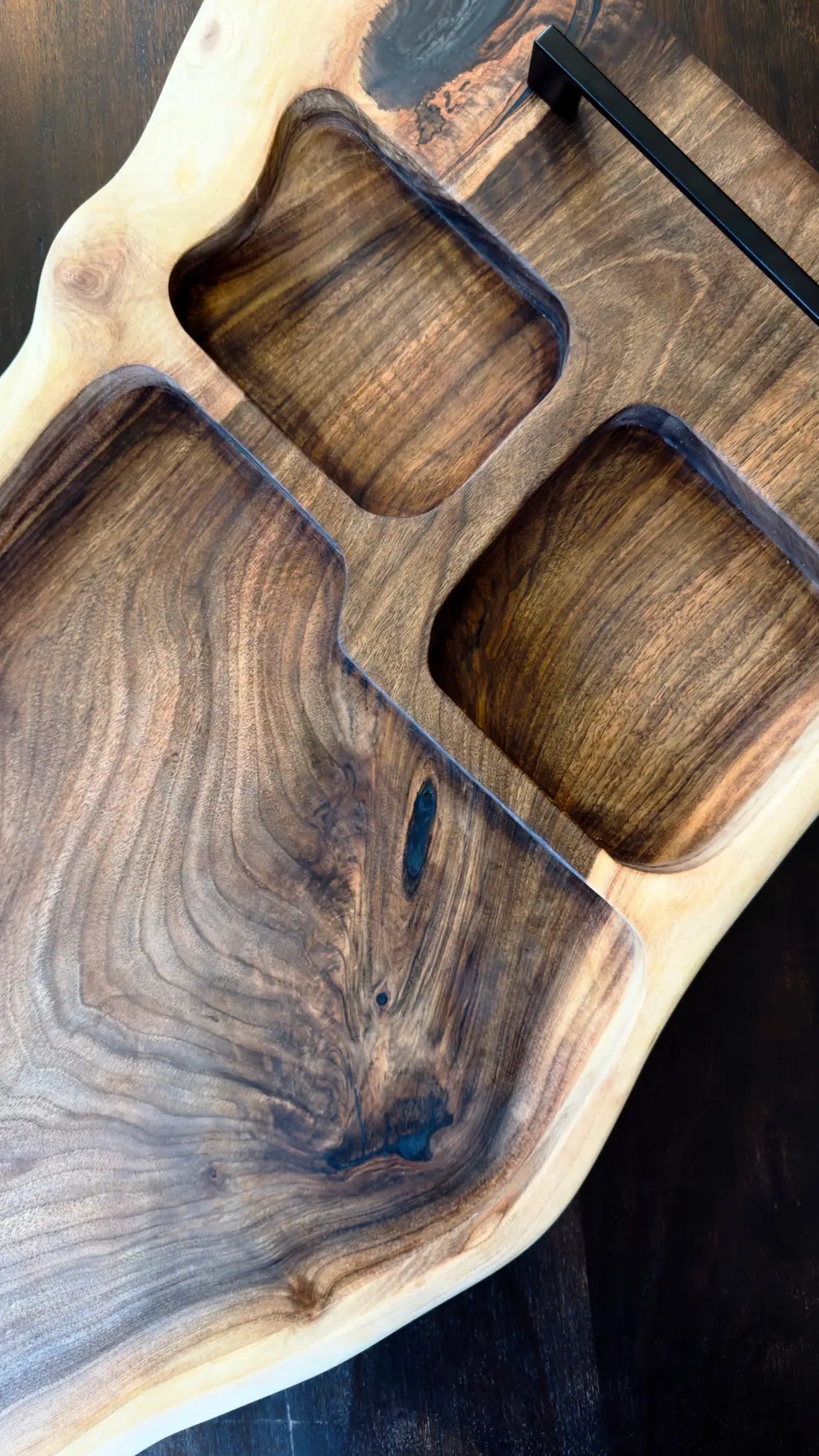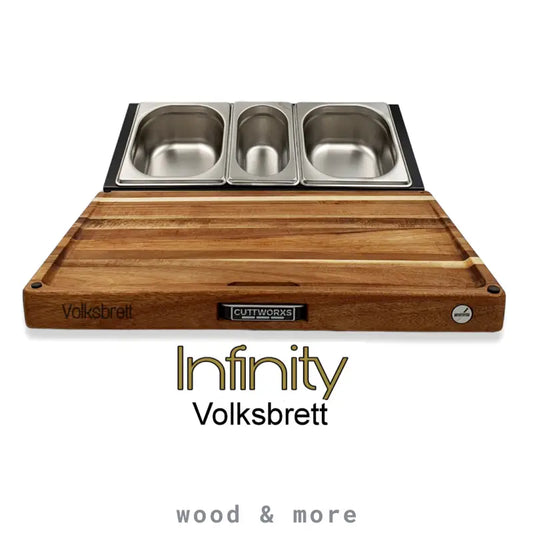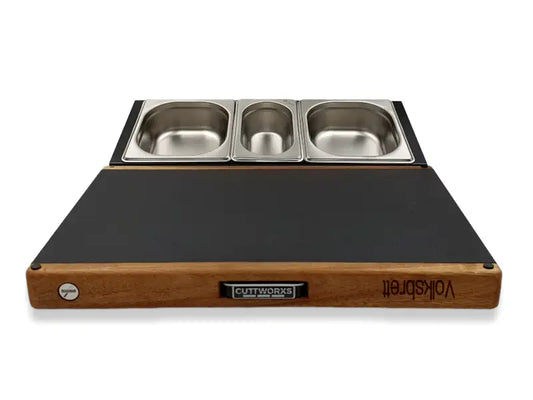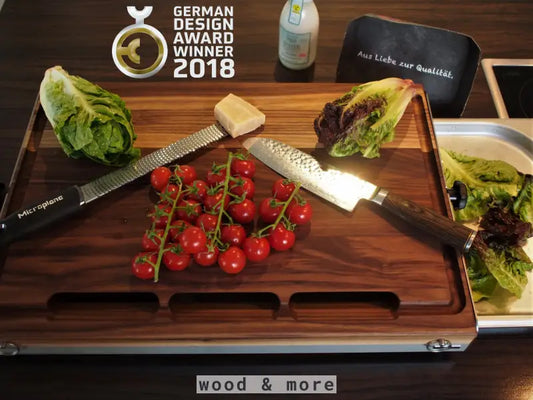
Serving boards in detail: Which type of wood suits you?
Serving boards are not only practical helpers, but also stylish accessories that enhance the table. But which wood is right for you? The choice of wood not only affects the appearance, but also the durability, care and price of the board. Here is an overview of popular types of wood and their properties - from inexpensive to exclusive.
1. Ash – the robust beauty
- Hardness: Ash is relatively hard and durable, making it ideal for everyday use.
- Grain: The distinctive, wavy grain gives ash boards a lively look that is rustic yet elegant at the same time.
- Processing: Ash is easy to process and remains dimensionally stable.
- Durability: High durability and resistance to cracks and deformation.
- Price: Due to its availability and good workmanship, ash is a more affordable choice that still offers plenty of character.
2. Oak – traditional and timeless
- Hardness: Oak is extremely hard and therefore particularly durable.
- Grain: The characteristic grain with fine lines looks elegant and fits into almost any ambience.
- Processing: A little harder to work with, but the result is stable and high quality.
- Durability: Very robust and durable, resistant to moisture and warping.
- Price: Oak boards are in the middle price segment, as the high quality is often appreciated.
3. Elm – the striking choice
- Hardness: Elm is a slightly softer type of wood, but still durable enough for serving boards.
- Grain: Heavily grained with a striking, high-contrast look – ideal for those who want to make a statement.
- Processing: Elm is easy to process, but tends to warp easily if not optimally cared for.
- Shelf life: Medium shelf life, should be protected from moisture.
- Price: In the medium to higher price segment due to their eye-catching appearance.
4. Walnut – noble and luxurious
- Hardness: Walnut is harder than elm, but slightly softer than oak and ash.
- Grain: Dark, warm tones and a fine, elegant grain make walnut unique and particularly noble.
- Processing: Very easy to work with and resistant to cracks.
- Durability: Walnut is very durable and remains dimensionally stable, even with intensive use.
- Price: Walnut is more expensive than oak and ash because its noble appearance and excellent durability are in demand.
5. American walnut – exclusive and exceptional
- Hardness: American walnut is similarly hard as the native walnut, but often denser.
- Grain: With its dark tones and fine grain, American walnut is one of the finest woods, often with an intense, dark shimmer.
- Processing: Easy to process and extremely dimensionally stable.
- Durability: Very long durability and high resistance, perfect for frequent use.
- Price: The most expensive in our selection. American walnut is particularly exclusive and ideal for anyone who wants a high-quality, unique piece.
Conclusion: Price-performance and wood choice for your serving board
Depending on the type of wood, the prices for serving boards can vary greatly. While ash and oak offer good value for money, walnut and American walnut are particularly high-quality and suitable for those who value exclusivity.
Tip: Choose the type of wood that best suits your needs - whether robust and suitable for everyday use or elegant and representative. Each type of wood tells its own story and brings a special touch to the table.



























